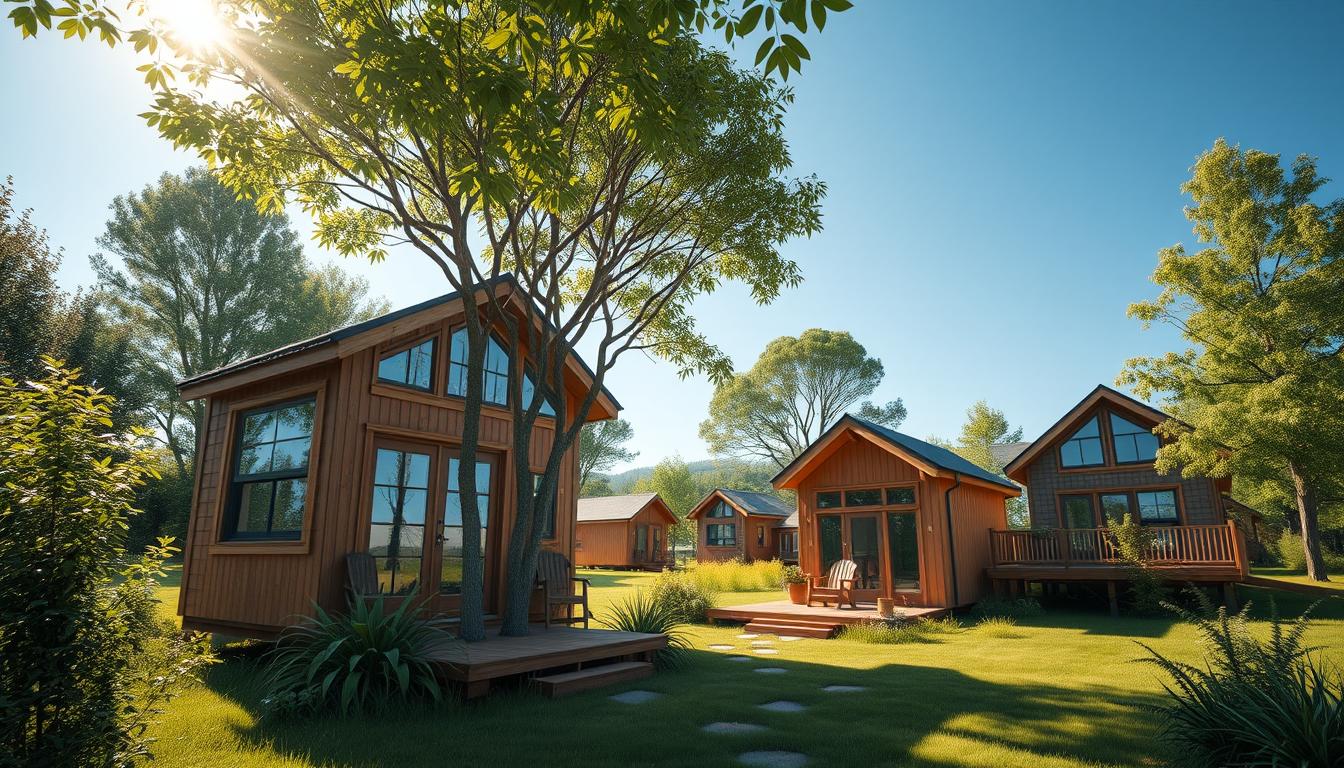The tiny home movement in the UK is changing how we live. Choosing sustainable wood for these homes is key. It’s durable and looks great. Reclaimed timber, for example, is good for the planet and adds charm to homes.
Wood tiny homes are becoming more popular. They range from custom wooden cottages to eco-friendly cabins. Choosing sustainable wood means we can live stylishly while caring for the environment.
Key Takeaways
- Wood tiny homes combine eco-friendliness with aesthetic appeal.
- Utilising reclaimed timber reduces environmental impact.
- Sustainable timber cabins offer unique character and warmth.
- Bespoke wooden cottages can be designed to fit modern and traditional tastes.
- Tiny homes represent a sustainable and stylish solution for eco-conscious living.
Introduction to Sustainable Tiny Homes
Living in sustainable tiny homes is more than downsizing. It’s a new way of living that’s good for the planet. These homes are eco-friendly and offer smart living solutions with a low environmental impact. Let’s explore what makes a tiny home sustainable and why it’s becoming a popular choice.
What Makes a Tiny Home Sustainable?
Sustainable tiny homes combine eco-friendly design with smart living. They use materials like reclaimed wood and bamboo to cut down on carbon emissions. High-efficiency appliances and solar power help save energy too.
Havenn Tiny Houses show how it’s done. They use reclaimed materials for unique, green homes. Their small size also means less is needed for building and upkeep, making them sustainable.
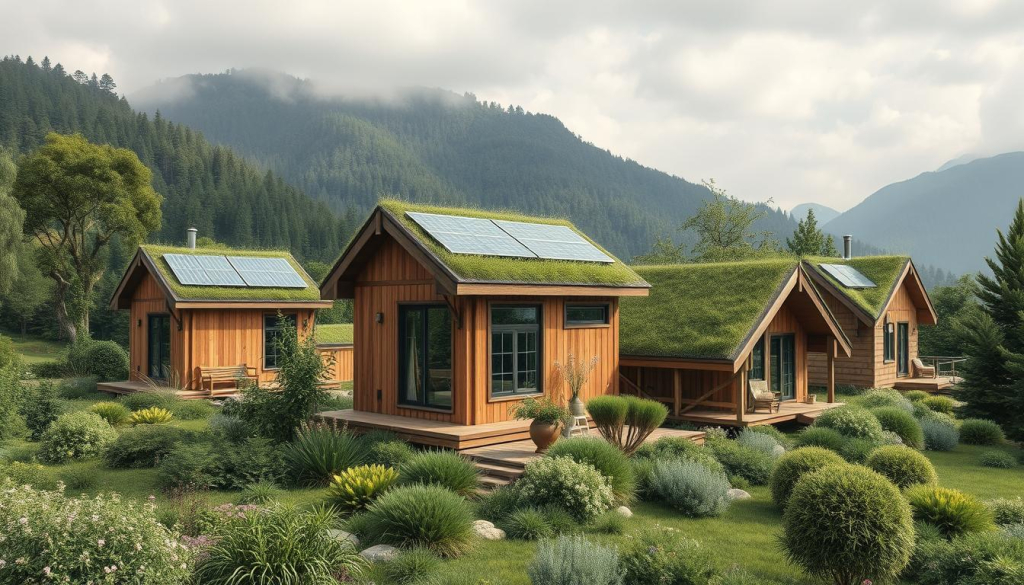
The Benefits of Going Tiny
Living in a tiny home has many advantages. These homes are often cheaper to live in than big houses. They also use less energy, thanks to their size and efficient features.
People who choose tiny homes often feel closer to their community. They also save money, with tiny house prices ranging from £12,000 to £60,000. Monthly costs can be as low as twenty euros.
In short, tiny homes are not just small. They offer a sustainable and rewarding way of life.
Choosing the Right Sustainable Wood
In tiny home building, picking the right wood is key. It must be sustainable and last long. People now choose eco-friendly woods like FSC-certified and reclaimed wood. These options are great for tiny homes.
Types of Sustainable Wood for Tiny Homes
There are many sustainable wood types for small homes. Here are a few:
- FSC-certified wood: It comes from forests managed well.
- Reclaimed wood: Gives old timber a new life, adding charm to homes.
- Other sustainable options: Like cork and bamboo, which are good for the planet.
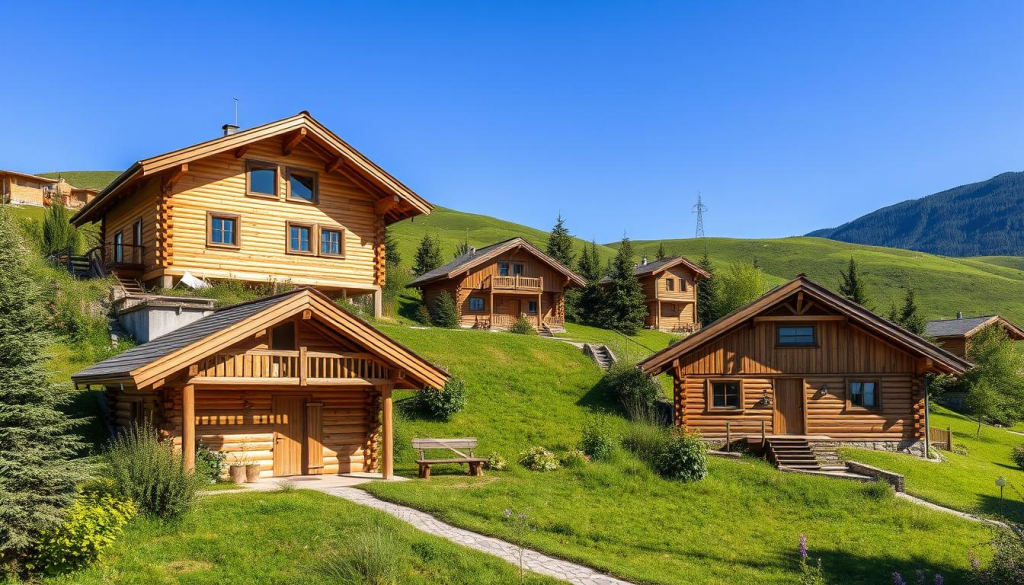
Benefits of Using FSC-Certified and Reclaimed Wood
FSC-certified wood supports forests and fights deforestation. It also helps animals. Reclaimed wood cuts waste and adds history to homes. Both are good for the planet, perfect for tiny homes.
“Using FSC-certified and reclaimed wood is key for tiny homes that are beautiful and green.” — Tiny Home Experts UK
Local Sourcing of Sustainable Wood in the UK
Choosing wood from the UK has many benefits. It helps local businesses and cuts down on transport pollution. UK wood also lasts longer in our climate. Using native woods like oak and ash is best.
When picking wood for your tiny home, think about FSC-certified and reclaimed wood. Also, choose local wood. This way, you’re not just building a home; you’re helping the planet.
Designing Efficient Wood Tiny Homes
Building a home in a small space is both exciting and challenging. With smart planning and creative designs, you can make the most of comfort and function. Let’s see how to blend style and sustainability in compact living.
Compact Living with Style and Sustainability
Compact wood cabins are known for being eco-friendly and space-saving. They use sustainable materials and last long, needing little upkeep. This adds a warm, rustic feel. Plus, using local wood cuts down on carbon emissions, making them great for those who care about the planet.
Importance of Natural Light and Ventilation
Getting plenty of natural light in small homes is key to making them feel welcoming. Big windows and skylights bring in lots of light, cutting down on the need for artificial lights. Good ventilation also improves air quality, saves energy, and keeps residents comfortable.
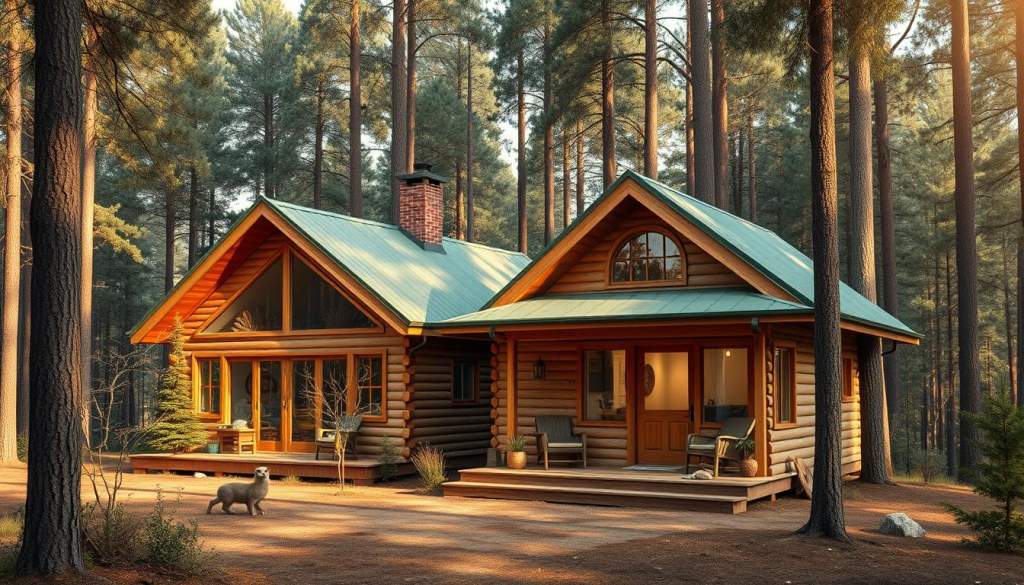
Maximising Space with Multi-Functional Furniture
Using multi-functional furniture is a smart way to design small homes. In tight spaces, furniture often does more than one job. This saves room and boosts function.
- Sofa beds that turn into beds at night.
- Foldable tables that hide away when not needed.
- Storage benches that offer a place to sit and hide things.
By choosing furniture that does double duty, you can keep your home tidy and functional. Smart storage and small appliances also help make the most of small spaces, ensuring a modern and comfy lifestyle.
Incorporating Recycled and Eco-Friendly Materials
Using recycled materials in tiny homes is key for sustainable living. Recycling metal for roofs or glass for windows reduces waste and saves raw materials. It also makes each home unique.
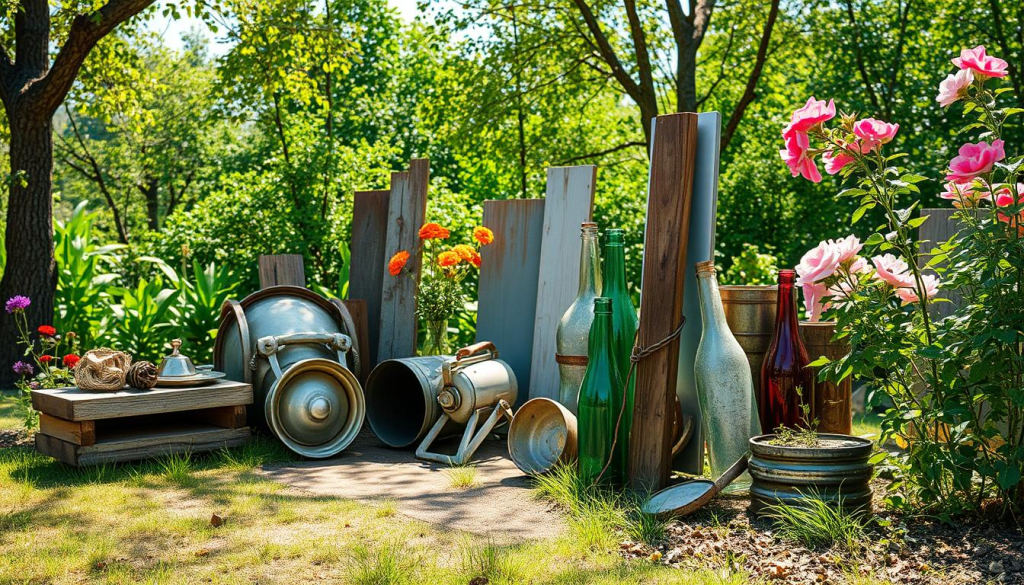
Benefits of Using Recycled Materials
Choosing recycled materials lowers environmental impact. Here are the main advantages:
- Cost-Efficiency: Reclaimed wood or recycled metal is cheaper than new materials.
- Environmental Preservation: It reduces natural resource use and landfill waste.
- Unique Character: Repurposed glass windows add a special look to tiny homes.
Using recycled materials also supports sustainable living. New tech makes it easier and more efficient. This allows for creative designs without losing quality.
Eco-Friendly Insulation Options
For sustainable living, picking the right insulation is crucial. Options like sheep’s wool or recycled denim keep homes warm or cool well. They cut heating and cooling costs by 20%.
Sheep’s wool insulation is great for tiny homes. It’s breathable and resists moisture. This keeps homes comfortable and healthy, fitting with sustainable living.
Using eco-friendly insulation with solar panels and rainwater systems makes tiny homes eco-friendly and efficient. Choosing biodegradable insulation saves energy and supports sustainability. It’s a smart choice for eco-conscious tiny home lovers.
Conclusion
Building and living in a bespoke wooden cottage or a miniature timber house changes your lifestyle. It moves you towards sustainability, efficiency, and a minimalist way of life. These tiny homes are not just small. They also promote eco-friendly living and showcase the latest design trends.
The tiny house movement started in the early 2000s with pioneers like Jay Shafer. Now, tiny homes in the UK use sustainable materials like reclaimed wood and recycled steel. This makes them not just smaller but also more eco-friendly, using less energy and waste than traditional homes.
Builders like The Tiny Housing Co and Tiny Eco Homes aim to balance small living with comfort. They create stylish and functional spaces. This shows that living in a tiny home is more than a choice—it’s a commitment to a simpler, greener life.
These homes have a lower carbon footprint, producing about 2,000 pounds of CO2 emissions yearly. This is much less than the 28,000 pounds from a traditional home. Plus, living in a tiny home can save you money, with monthly costs as low as £500. This includes utilities and maintenance, helping you save and support local economies.
The tiny home movement in the UK makes us think differently about living well. It encourages us to live in a way that’s good for our communities and the environment. This change is not just about finding a smart housing solution. It’s about living more responsibly and abundantly.


